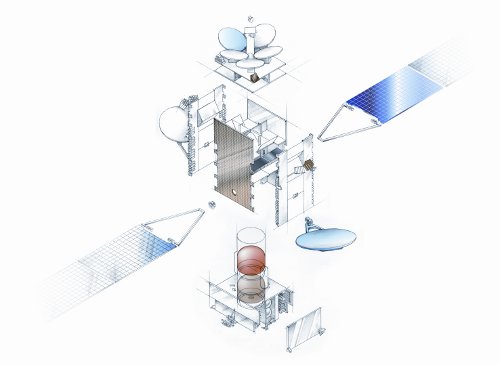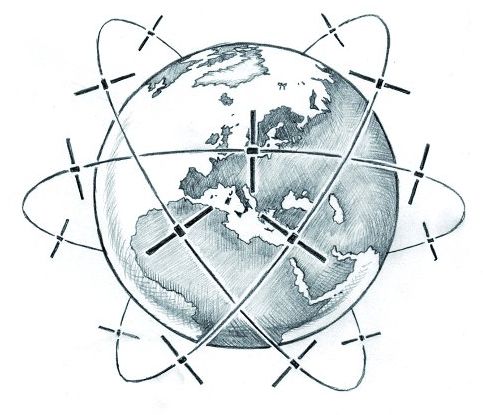Satellite Technology
DID YOU KNOW?
It takes 2 – 4 years to manufacture a telecommunications satellite with 100% upfront investment by Satellite Operators.
A communications satellite is essentially a communications relay high in the sky. It has antennas to receive radio signals from stations or terminals on the ground, electronics to process, amplify and re-transmit the signals, and further antennas to send the signal back to earth, either to wide or specific zones. It uses solar energy collected from large arrays of solar cells, which supply the satellite with all the electrical power it needs to function and transmit to earth. In theory the satellite could therefore function forever however a small amount of fuel is used to maintain it at the right position in space, which allows it to function for around 15 years.

When used for communications, a satellite acts as a repeater flying at 36,000km (‘geostationary orbit’) above the earth’s surface. This means it appears fixed in the sky to an observer on earth (you cannot see them!!). This allows signals to be transmitted over distances that are very much greater than the eye can see. In June 2006, more than 300 satellites were in orbit (260 of which delivered commercial communications). Click here to read about satellite orbits.
How does it work? An earth station transmits the radio signal up (the ‘uplink’) to the satellite on one frequency. The satellite receives the signal and retransmits it to earth (‘downlink’) on another frequency. The circuitry in the satellite that acts as the receiver, frequency changer, and transmitter is called a transponder.

At first, satellite performance was very limited. To compensate for this, very large ground stations – with dish antennas more than 20 metres in diameter – were required to establish links with them. The use of satellites was limited to long distance telephony and to the transport of television signals between studios.
Now with more powerful satellites and the use of higher frequencies, satellites are part of everyone’s life with millions receive direct signals from the sky for a wide range of applications from watching TV to communicating with ships at sea.
There are many types of telecommunication satellites, with designs varying according to their purpose. They fly in different orbits, using different frequencies and they transmit different types of signals using a variety of power levels, depending on the needs of the service. Two of the world's leading satellite manufacturers are European companies. Add links or logos with links to Thales Alenia Space website & Astrium Satellites.